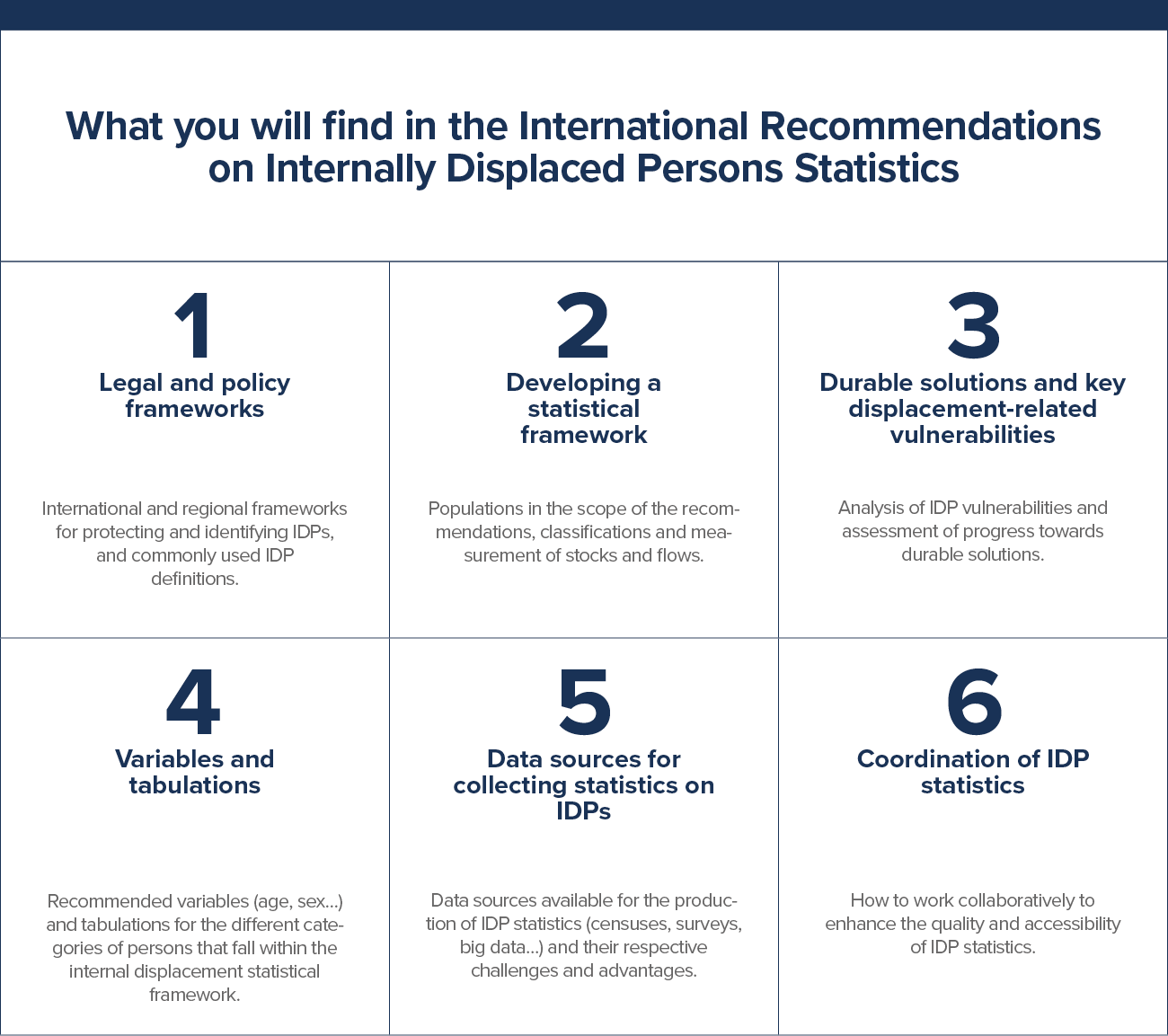
Expert analysis
25 January 2021
Why we should all celebrate the publication of the International Recommendations on IDP Statistics
The International Recommendations on Internally Displaced Persons Statistics have just been published after years of intense work by the Expert Group on Refugee and IDP Statistics (EGRIS). While this may seem like news for nerds, it is in fact a real milestone on the path to improving data on IDPs and ramping up response to internal displacement.
When the Expert Group on Refugee and IDP Statistics was established in 2016, those involved were acutely aware that a long road lay ahead of them. In 2018, a technical report prepared by the IDP sub-group was submitted to the United Nations and this formed the basis for what we have today: an ultimate reference on statistics that guides countries how to build official statistics relating to IDPs. Led by the Joint IDP Profiling Service with support from the United Nations Statistics Division, UNHCR, Statistics Norway and IDMC, it is the result of a close cooperation between experts from Afghanistan, Azerbaijan, Bosnia and Herzegovina, Colombia, Cote d’Ivoire, Georgia, Kosovo, Iraq, Mexico, Nigeria, Norway, Philippine, Somalia, Uganda and Ukraine, as well as a dozen regional and international organisations. Never before had such a collaborative process led to a comprehensive document of good practices on IDP data.
Based on the knowledge and experience of all contributors, this is a collection of concrete recommendations on the production and dissemination of official statistics and operational data on internal displacement. It will directly inform efforts by national authorities to protect and assist IDPs and achieve durable solutions to displacement. The recommendations also provide the basis for countries to increase the visibility of the issue and support better progress monitoring. Once implemented, these recommendations should result in data that is consistent within a country and over time, and comparable between regions and countries, allowing all concerned actors to use each other’s data.
A group of countries and organisations, among them IDMC, is celebrating the release of the Recommendations as the real work begins now. Committed to implementing what is in the report, the EGRIS steering committee has now formed 3 sub-groups that are each taking on a specific task in supporting countries to translate the words into action. The recommendations will continue to be promoted, countries will receive technical support from EGRIS members to build data systems and statistical capacity, and a guiding manual will continue to be updated and made available to countries’ national statistical offices in support of implementation.
Thus the publication of these recommendations is not only the promise of improved knowledge on internal displacement. It is also a sign that the issue is generating more investment than ever before and that an increasing number of countries are showing the necessary political commitment. After disappointment that internal displacement was not more clearly embedded in the Global Compact on Refugees, the recommendations show that the world is now coming together to better support the 51 million IDPs worldwide.
With 45 countries and territories and 20 regional and international organisations involved in the EGRIS, the recommendations also demonstrate that it is possible to build on different perspectives and address internal displacement collectively. As the United Nations Secretary General’s High Level Panel on Internal Displacement enters its final months of discussions, this news is certainly ground for hope.

